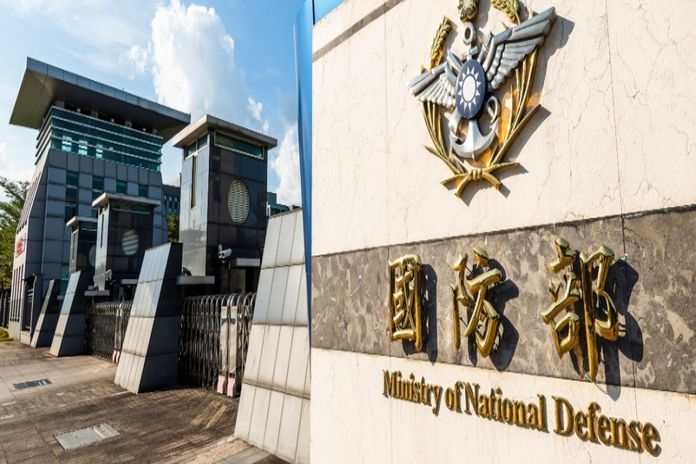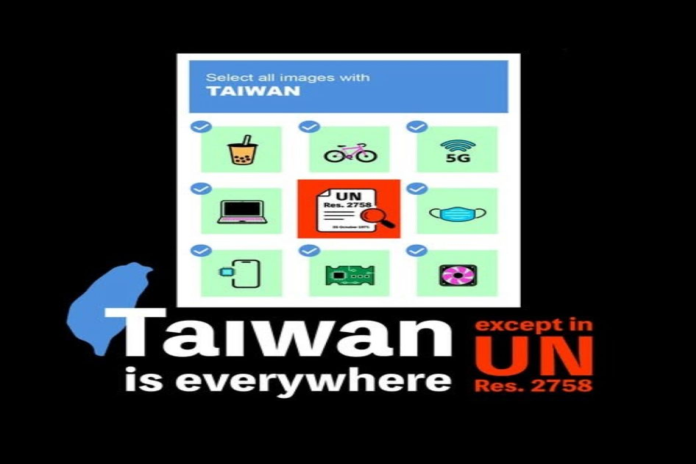By Cathy Fang
Taiwan is stuck in a strategic messaging problem. Despite its determined pursuit of greater self-defense capabilities – improving both the quality and quantity of its men and munitions – the island democracy struggles to tell a compelling story about its efforts. This has led to a paradoxical “do-say” gap, in contrast to the more common “say-do” gap. While the latter often involves lofty words with little action, the former is more subtle: real progress hidden from view. As the threat of conflict evolves from a distant possibility to a near reality, staying quiet is no longer a viable strategy – and silence risks becoming a lethal dagger in maintaining the status quo in the Taiwan Strait. Without a clear, consistent, and confident narrative about its self-defense improvements and the success of its reforms, Taiwan risks weakening two key pillars of its security: its own people’s will to stand firm and fight, and its allies’ commitment to show up and provide support.
The military’s risk-averse culture in information disclosure
The Taiwanese military’s reluctance to share information is not a novel phenomenon, nor is it unique to Taiwan. However, the armed forces of this island nation carry two distinctive burdens: a legacy of strained civil-military relations and an insular organizational culture. This heritage has cultivated a mindset among military personnel that is markedly conservative, cautious, and acutely sensitive to risk when it comes to information disclosure.
The specter of unforeseen political ramifications looms large, as does fear that the media will misinterpret or deliberate misdirect public discourse. These are perils the military deems too costly to court. Consider, for instance, the well-intentioned efforts to boost public confidence by releasing footage of troops honing their combat readiness. Such displays have been misconstrued as provocations towards China, while certain unprecedented maneuvers have fallen victim to misinterpretation. For example, this year’s Han Kuang exercises were intended to present “unscripted” rehearsal drills. Yet, when civilians captured images of troops in preparatory stages, questions arose about the meaning of “unscripted” in this context.
However, as Minister of National Defense (MND) Spokesperson Sung Li-fang (孫立方) explained, “unscripted” doesn’t equate to a complete absence of preparation. Rather, it signifies that participating personnel are not privy to specific scenario details beforehand. The proliferation of disinformation campaigns has only served to amplify the intensity and scope of misinterpretation surrounding well-intentioned actions. Consequently, a mentality of “the less trouble, the better” has become an intergenerational legacy within the Taiwanese military establishment.
Taiwan’s regression versus China’s progression
In the realm of visible armaments, China outpaces Taiwan significantly. On the invisible battlefield of information warfare, Taiwan finds itself at an even greater disadvantage – losing ground twice over, as it struggles to keep pace with China’s increasingly sophisticated information strategies. In fact, China’s proactive campaign in the messaging arena follows a meticulously crafted playbook the “three-warfare strategy” (public opinion warfare, psychological warfare, and legal warfare). For the Chinese leadership, wielding the power of discourse is not merely important, but paramount, serving as the linchpin for securing a position of strength at negotiating tables and shaping international perceptions.
This strategic approach is exemplified by the People’s Liberation Army’s (PLA) keen recognition of social media’s pivotal role in modern conflicts and peacetime operations. The PLA does not shy away from the digital spotlight; instead, it boldly showcases its modernized, disciplined, and combat-ready forces across various platforms. These efforts are designed to captivate domestic audiences, instilling a sense of national pride and confidence, while simultaneously commanding international attention and respect.
In stark contrast, Taiwan’s military apparatus, hampered by a combination of overcaution and risk aversion, remains largely reactive in its approach to information dissemination. This cautious stance results in a significant shortfall in upholding the “public right to know” – a principle that should be not only cherished, but actively championed in democratic societies. The disparity between China and Taiwan’s information strategies reflects a clear divide in their approaches to governance and public engagement.
While MND’s unfamiliarity with strategic messaging may contribute to this disparity, the crux of the issue appears to be a deep-seated unwillingness within Taiwan’s military establishment to engage proactively in the information domain. This reluctance is not merely a matter of preference, but a strategic vulnerability that threatens to leave the country at a significant disadvantage in the ongoing battle for hearts and minds. As the information landscape continues to evolve rapidly, with social media and digital platforms playing an increasingly central role in shaping public opinion and international relations -Taiwan’s hesitancy to fully engage in this arena could have far-reaching consequences for its security, diplomatic standing, and ability to garner international support in times of crisis.
Preparedness is not provocation
Strategic messaging is an art form – a delicate dance of influence that goes beyond mere information sharing. It is a persuasive symphony, guiding audience perceptions toward desired outcomes. At its heart are four key elements: clear transparency, swift real-time communication, focused intent, and action-oriented results. However, Taiwan’s efforts to boost capabilities and strengthen island resilience have hit a sour note in this quartet. Despite the fact that some advocates have urged for Taiwan to take a page from the Philippines’ playbook in the South China Sea and counter China’s gray zone military maneuvers with a robust information offensive, these calls have found little resonance within Taiwan’s MND, which is wary of being cast as the provocateur on the global stage.
In this heated debate, it is vital to separate promoting self-defense readiness from aggressive posturing. Taiwan’s forces are not gearing up for war; they are preparing for potential conflict while hoping for peace. This ready-to-defend stance strikes a different chord from the naming-and-shaming of adversaries, and offers a more subtle approach in the complex area of cross-Strait relations.
Efforts should be turbocharged, not merely doubled
The launch of the “Whole-of-Society Defense Resilience Committee” is encouraging, with strategic communication integrated into six of its categories. This new initiative promises to be an effective channel for highlighting Taiwan’s civil-governmental efforts to enhance resilience, potentially addressing the current messaging gap. While this development is undoubtedly positive, Taiwan’s defense communication strategy still has room for improvement. The ROC Defense Mission could also play a crucial role in strengthening Taiwan’s self-defense narrative. Defense attachés should broaden their military diplomacy efforts. With increased budgets and staff, attachés could coordinate an extensive network of think tank partnerships, fostering a deeper international understanding of Taiwan’s unique security situation.
Leading this intellectual endeavour should be the Institute for National Defense and Security Research (INDSR, 國防安全研究院), a think tank sponsored by the MND. INDSR consistently produces nuanced insights into Taiwan’s defense mindset, offering invaluable perspectives on the nation’s complex security challenges. These invaluable insights deserve a spotlight on the global stage. Its role should transcend that of a mere echo chamber for the defense ministry; it should function as a resonant, authoritative voice that not only articulates Taiwan’s strategic concerns but also provides a nuanced, contextual understanding of the perceived threats from China and the complexities of US commitment to regional stability.
In this way, INDSR can serve as an indispensable wellspring of strategic intelligence for US and international think tanks, policymakers, and security analysts. By facilitating the flow of Taiwanese defense perspectives into influential policy-making circles, Taiwan can ensure that its voice is not only heard but also seriously considered in international defense strategy discussions. This proactive approach to sharing the island democracy’s unique insights could significantly impact global perceptions and policy formulations regarding regional security dynamics.
Crafted, precise messaging matters
While strategic messaging often zeroes in on adversaries or competitors, Taiwan’s situation is far more intricate and multifaceted, akin to a complex “group chatbox” engaging various stakeholders with diverse interests and perspectives. The complexity and nuance of this dual focus – addressing both internal and external audiences -cannot be overstated or underestimated. For the Taiwanese populace, especially those in the reserve forces who form a crucial backbone of national defense, the messaging must strike a delicate balance between being inspiring and pragmatic.
It should not only highlight their indispensable role in safeguarding national security but also address any doubts, concerns, or apprehensions they may harbor about their responsibilities and the potential challenges ahead. This involves far more than a mere call to arms; it necessitates a comprehensive, well-thought-out strategy that encompasses rigorous training programs, allocation of sufficient resources, and clear, transparent communication about the high stakes involved in Taiwan’s unique geopolitical position.
On the international front, the messaging directed towards allies and potential supporters needs to be equally compelling but tailored in a distinctly different manner. It is not simply a matter of requesting support or assistance; rather, it is about demonstrating conclusively that Taiwan is a reliable, proactive, and strategically important partner in the region. This means showcasing, with concrete evidence and actions, that Taiwan is taking significant and meaningful steps to bolster its own defense capabilities and infrastructure. By doing so, Taiwan can earn the trust, respect, and willingness of allies to offer their support when needed, creating a network of international backing that serves as a deterrent to potential aggressors.
Taiwan’s strategic messaging must serve as a sophisticated, multidimensional bridge between fostering internal resilience and cultivating external backing. It must be crafted with the utmost precision and care, ensuring that all parties involved – both domestic and international -fully grasp and appreciate the island’s proactive stance, its state of preparedness, and its commitment to maintaining peace and stability in the region.
The main point: Taiwan has struggled with a “do-say” gap, where its progress in defense issues is not effectively communicated to its citizens or the international community. This stems partly from Taipei’s concern about appearing provocative. To address this, Taipei must prioritize strategic communication, while INDSR can help integrate Taiwanese perspectives into global policy discussions.





